At the bottom of New Zealand is another, smaller lesser-known island—lying on the edge of the infamously rough ‘roaring 40s’ winds at the heart of the Southern Ocean. It’s called Stewart Island, a wild and unforgiving place, stunningly beautiful, remote and barren. In 2020, in the thick of the Southern Hemisphere winter (with international travel locked down), I led a trio of sea kayakers on an expedition closer to to home. We set out to see if we had what it took to survive the barrage of weather in an unsupported and unaided mid-winter circumnavigation.
Here are the six biggest lessons we learned along the way.
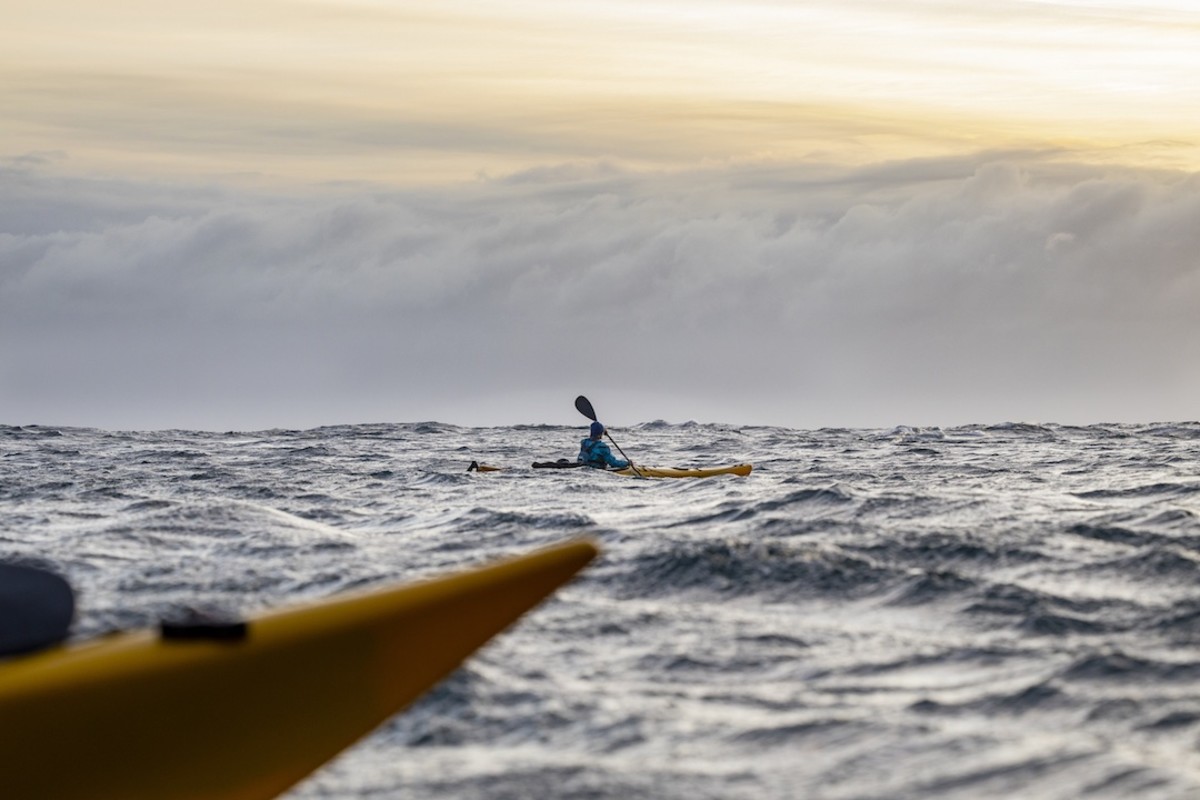
1. You can always push yourself further
A circumnavigation of Stewart Island is a physically grueling journey. It’s a tough proposition even for the most experienced kayaker. Day after day we battled against strong currents, relentless winds and swells. A routine consisting of over eight hours in a laden 200-pound kayak, pushing it further toward our goal, stroke after stroke, hour after hour.
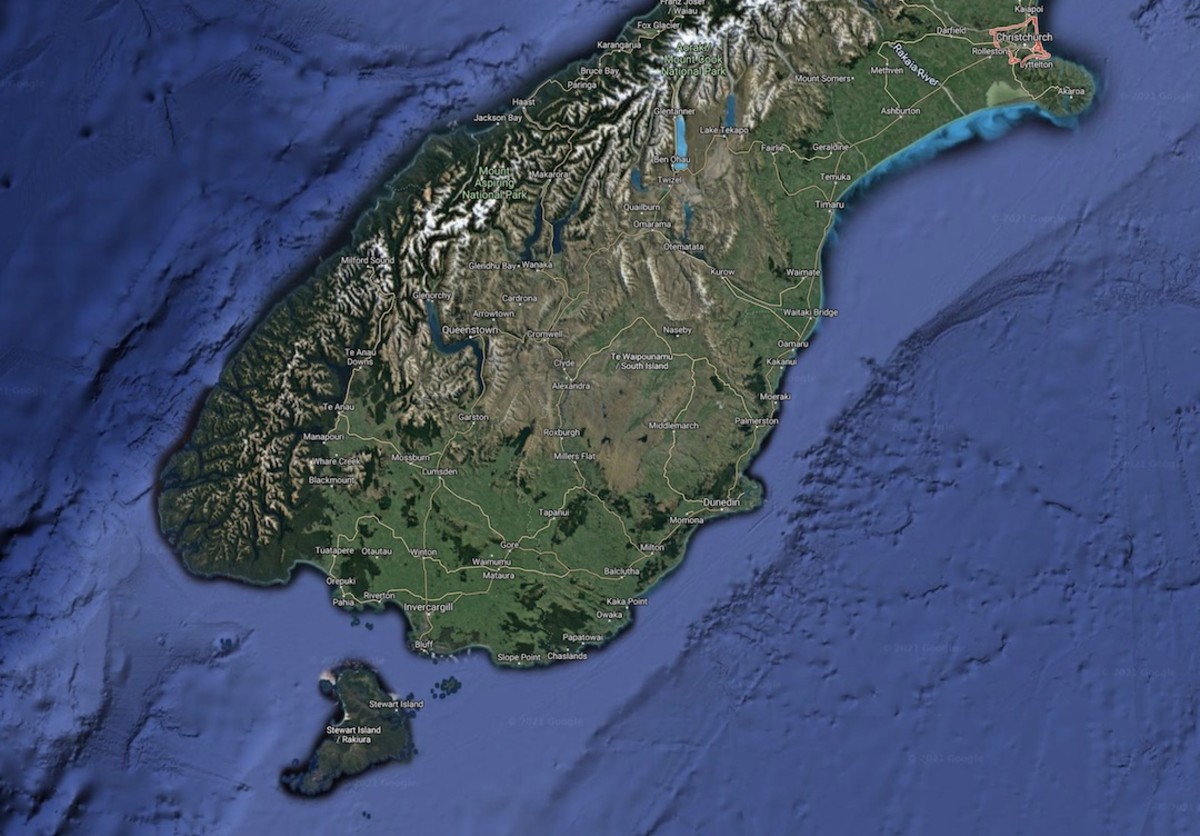
A few days in, we found ourselves with a battle on our hands. The waves and wind had subsided, and it was our chance to go for it. Our food was rationed for 10 days and we had already used five without even getting a quarter of the way around the island. With perfect conditions this was a critical day for the success of the expedition.
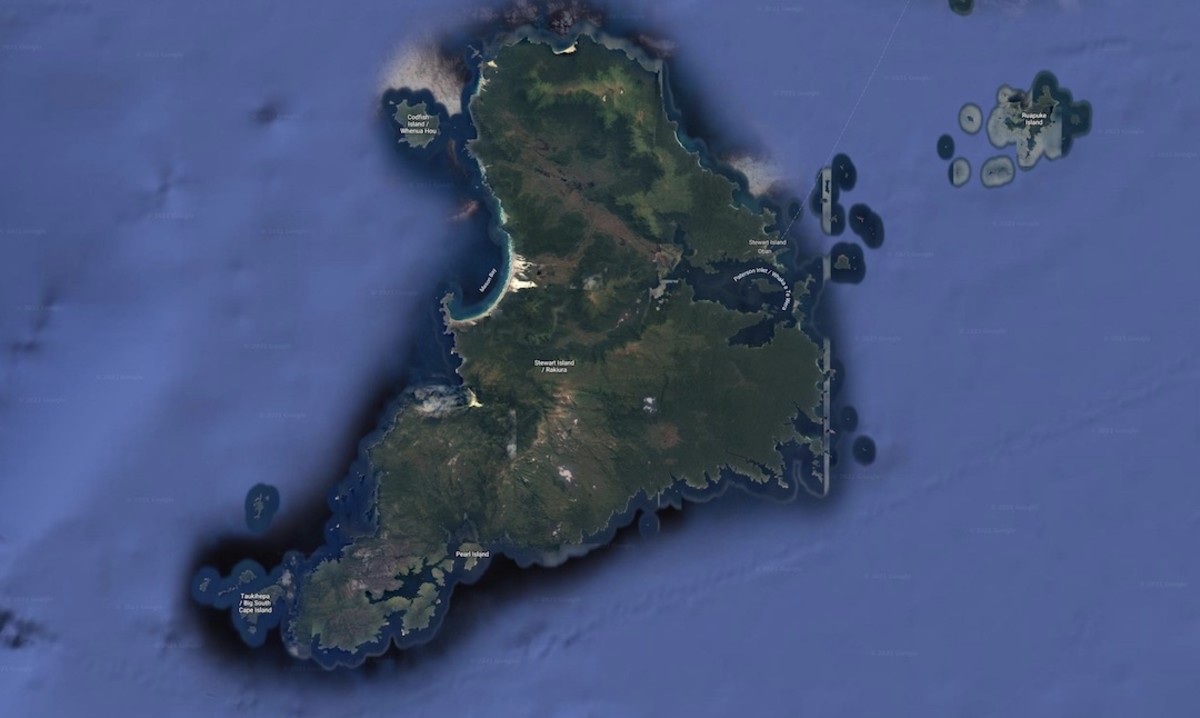
We set off early, rounding the Northwest Cape and heading south, out of the Foveaux Strait and into the Southern Ocean proper. A massive day as we passed by beautiful, remote coastline en route for Doughboy Bay—a safe harbor for the night. Our tired bodies and minds were distracted as we flew by the bays of Long Harry, the towering pillars of the East Ruggedy Mountains and were sucked south through the currents of the inner passage, bypassing the massive Mason Bay—an 8-kilometer-long white-sand beach that attracts some of the most epic (and isolated) surf in the country. This direct line saw us over 10kms out to sea, the island barely visible in the distance as we were treated to a slight tail swell and the wind swung.
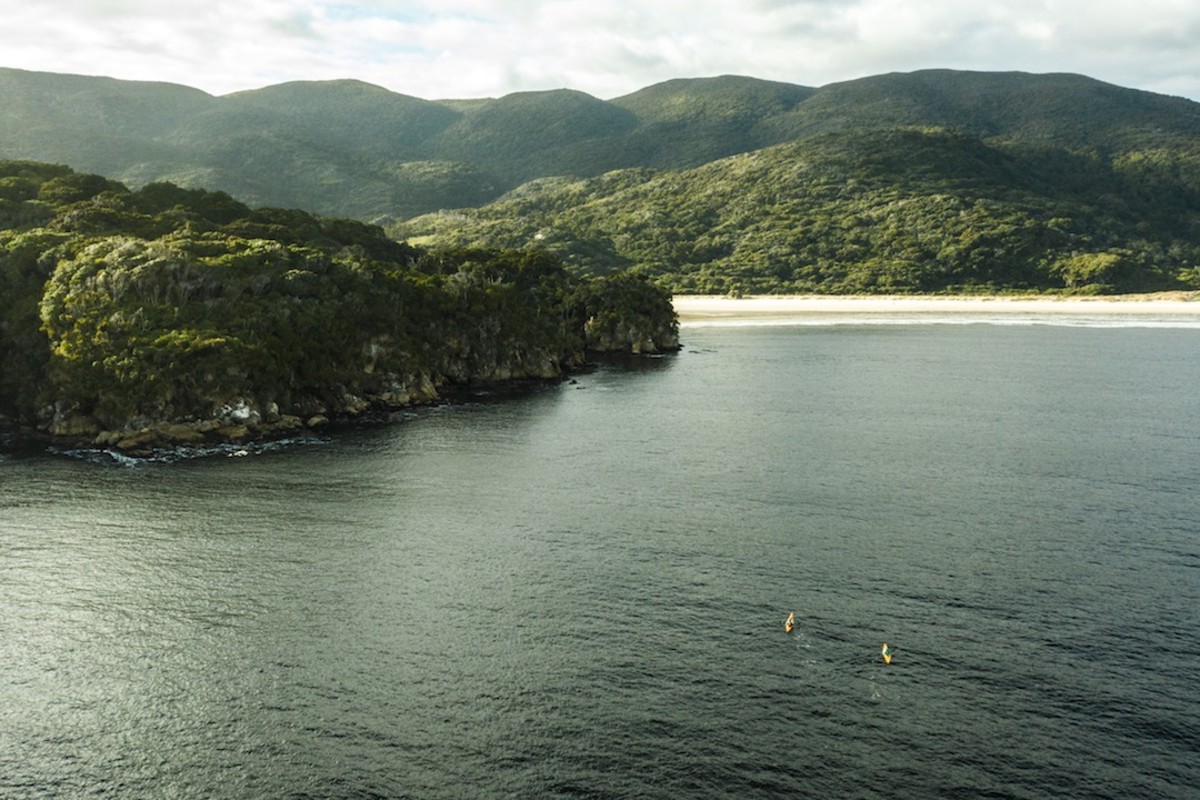
Our bodies began to ache, energy levels dropping, the saltwater blistering our hands—but you can always continue. We had been ambitious, but we knew that if we didn’t push on, the expedition was over.
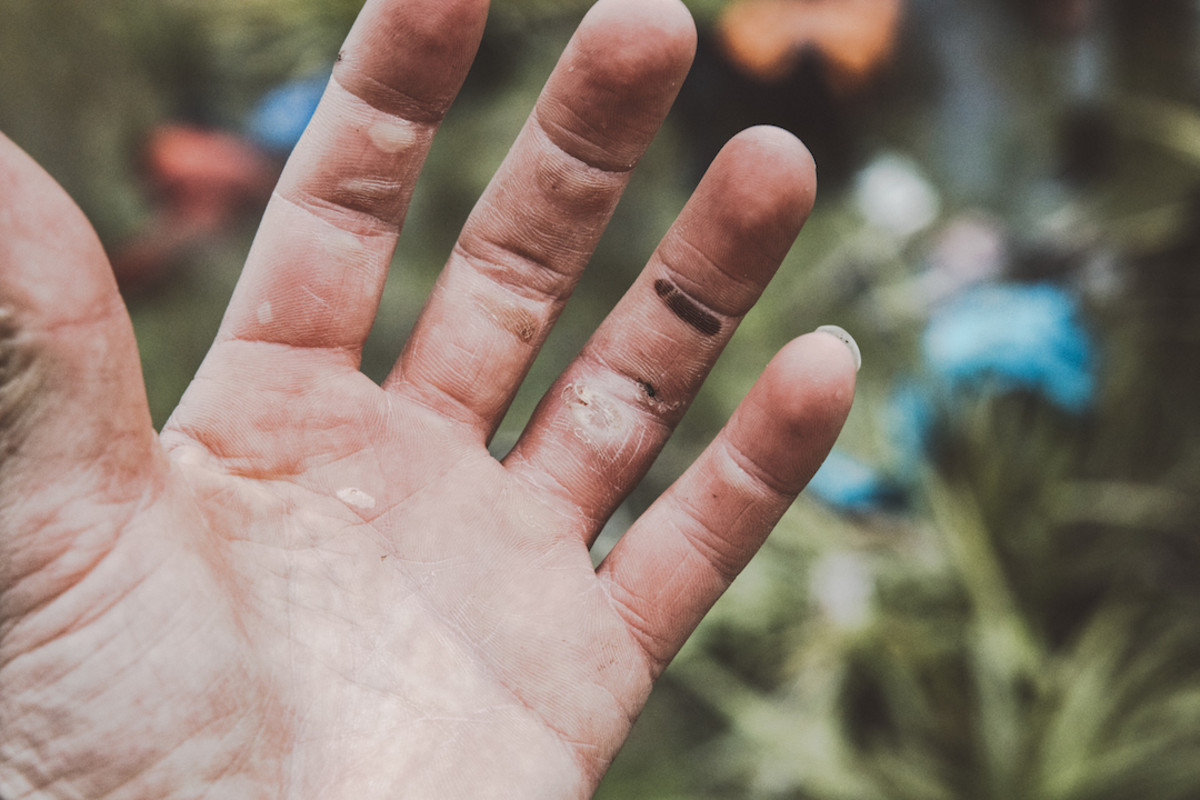
2. Patience is the most important tool
As the days progressed it became obvious our biggest challenge was time. The infamous Westerly that the roaring 40s are known for had picked up. Our progress was slowed to a standstill. For four days we had been constantly pushed back by the weather. Our progress along the northern coast was minuscule, constantly slowed by the gusting Westerlies.
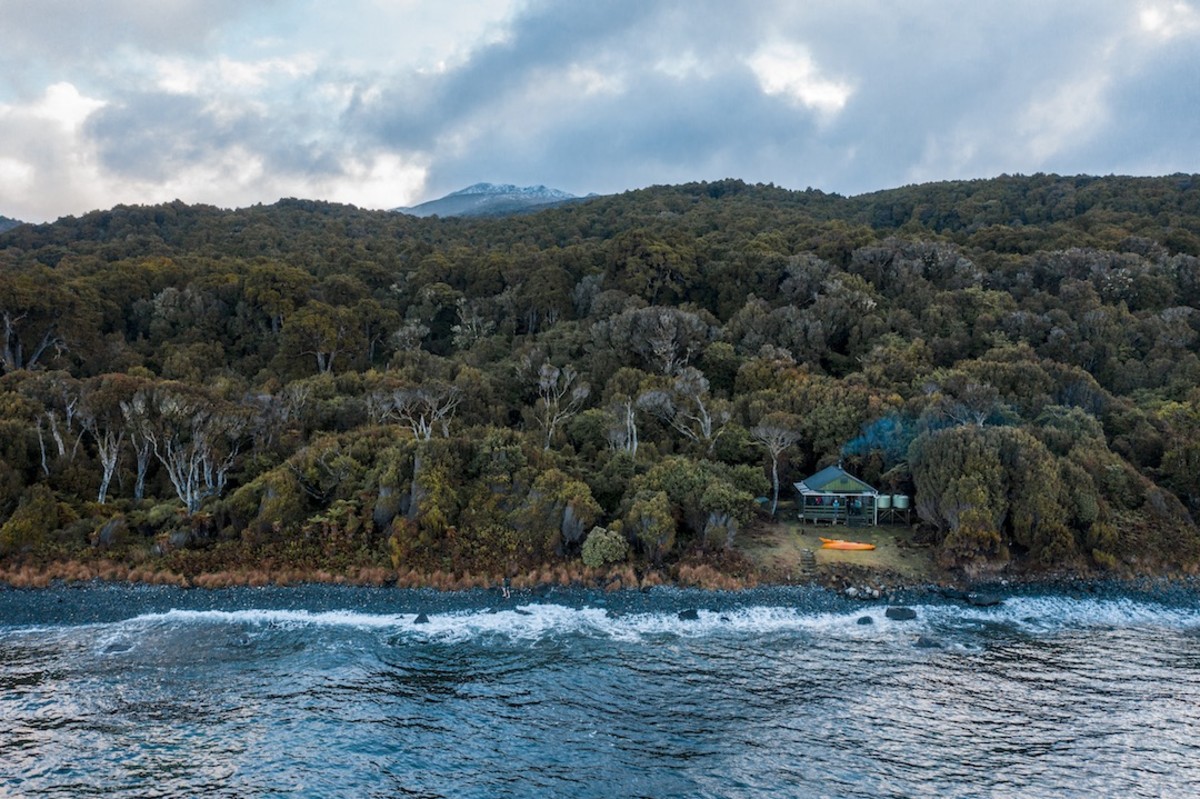
Eventually we sought shelter at the aptly named Christmas Village Hut to wait out the storm, recalculate our timeframe, and continuously count our food.
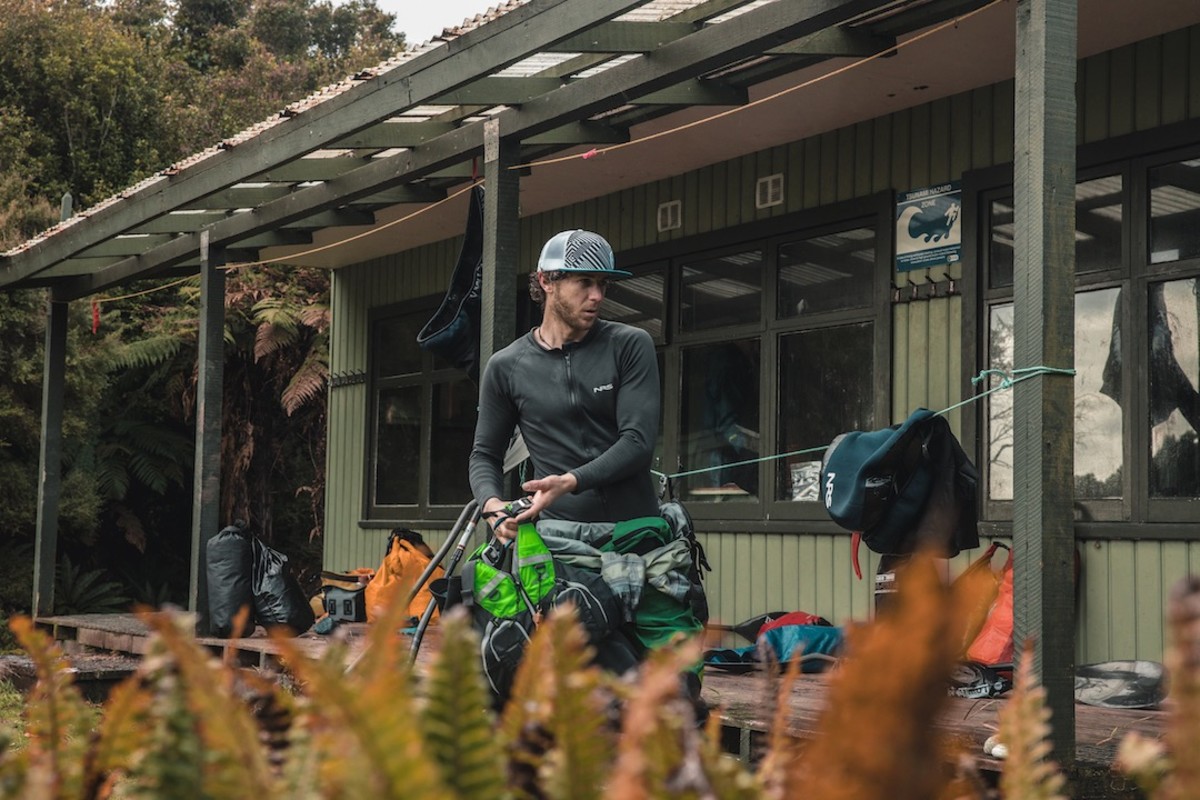
As the days dragged on, the likelihood of a successful expedition was getting lower and lower. It was important to be patient—to wait the storm out. As Shackleton famously said, “better be a live donkey than a dead lion.” We hoped for great weather but planned for the worst. It was mid-winter after all.

In hindsight, this time gave us the opportunity to explore. A moment to enjoy where we were and wander inland and experience the magical forests that blanket the island. Instead of rushing on by.
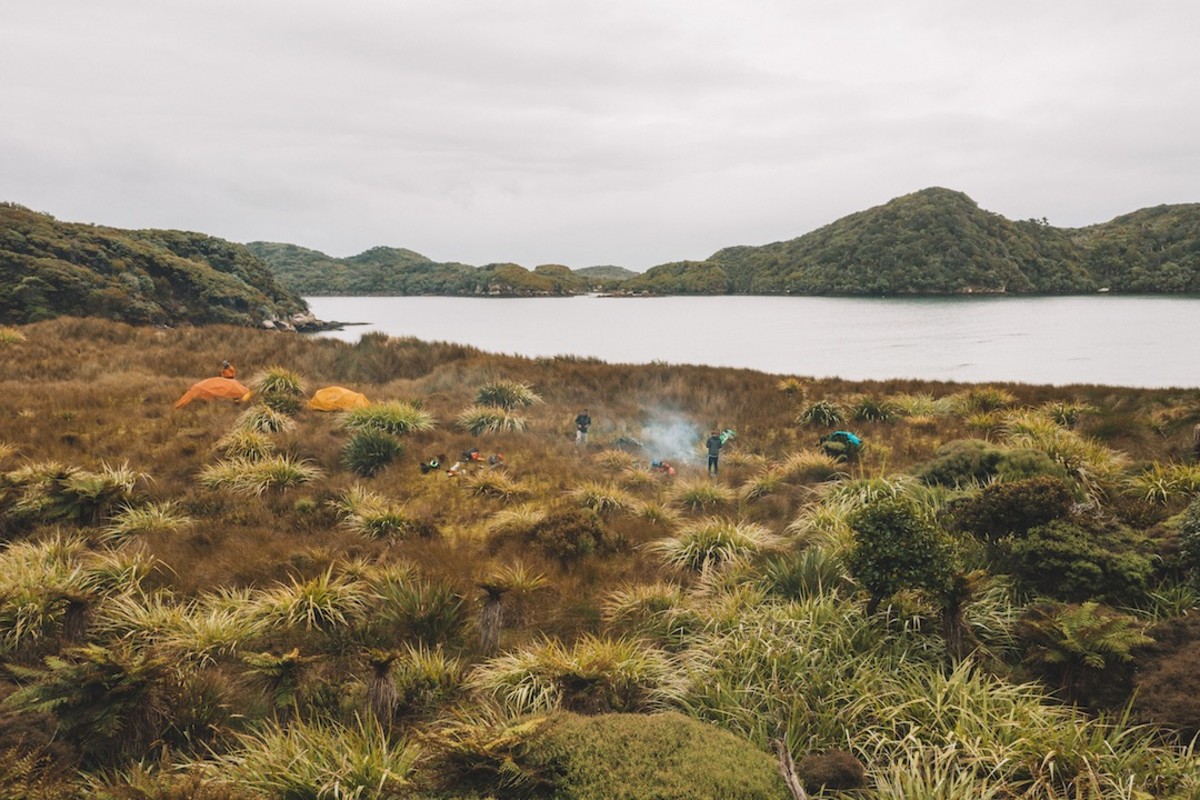
3. Timing is everything
On Day 8 we reached the crux of the expedition: the Southern Cape. This was the most inhospitable and remote part of the trip. Towering bluffs that have been slammed relentlessly by the powerful Southern Ocean swells created from raging Antarctic storms. Two storms brewed to the west and we planned to time our rounding to perfection—sneaking between each system. It was vital to get us farther south to a better staging ground. We worked our way closer, hiding behind scattered Islands to Nickleson Harbour. Here we waited for the swell to subside before making an attempt. This is a wild place and there was no way we wanted to head out in anything but manageable conditions. One day later, the conditions looked good, with variable winds and manageable southwest swell. We went for it and seven hours later we arrived at the shelter and beauty of Port Pegasus, in the shadow of the giant granite domes of Gog and Magog. We dropped a line, caught a fish and relaxed after what was a fairly massive day paddling past the most epic coastal landscape imaginable.
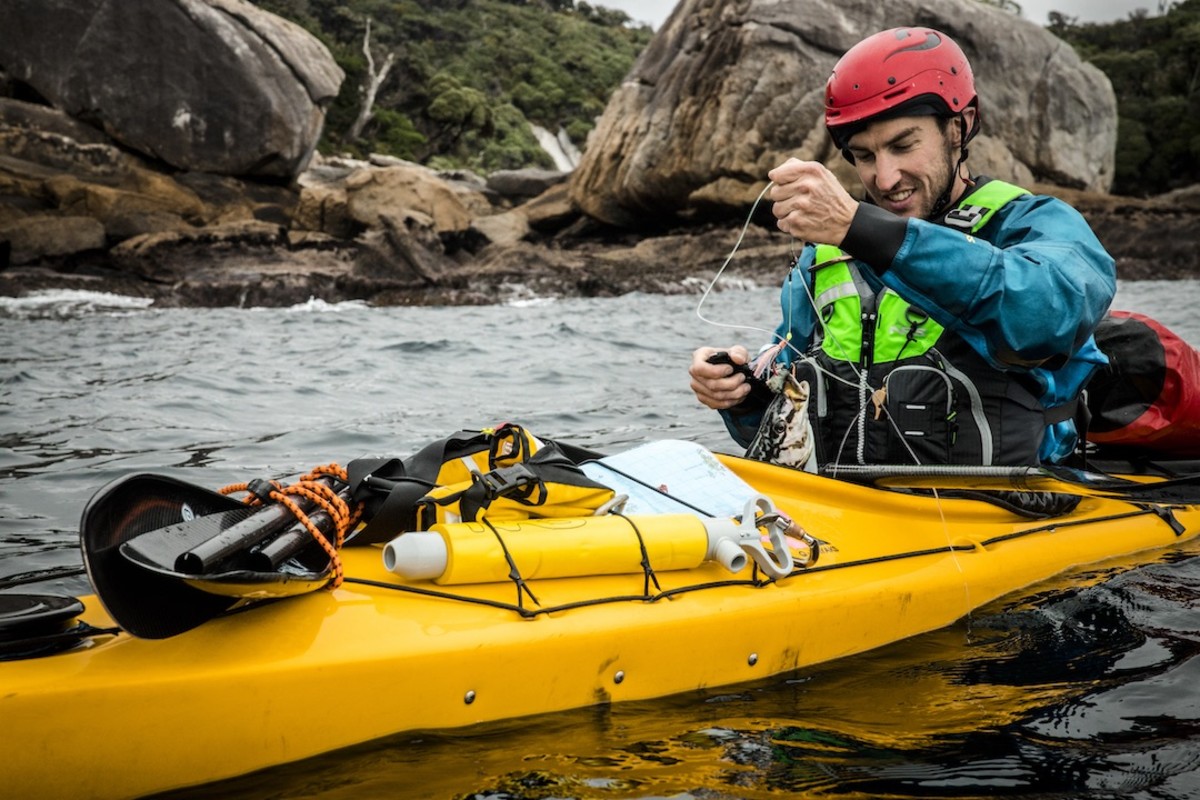
4. Trust your intuition.
It’s pitch black—darkness so think it blanketed us completely. It radiated the sounds of the Southern Ocean. We couldn’t even see the water, but we could hear its roar. With only one thing to do we pushed off, leaving the safety of Doughboy Bay, and entered the most exposed section of the circumnavigation: the 10 kilometers of coastline before Easy Harbour.
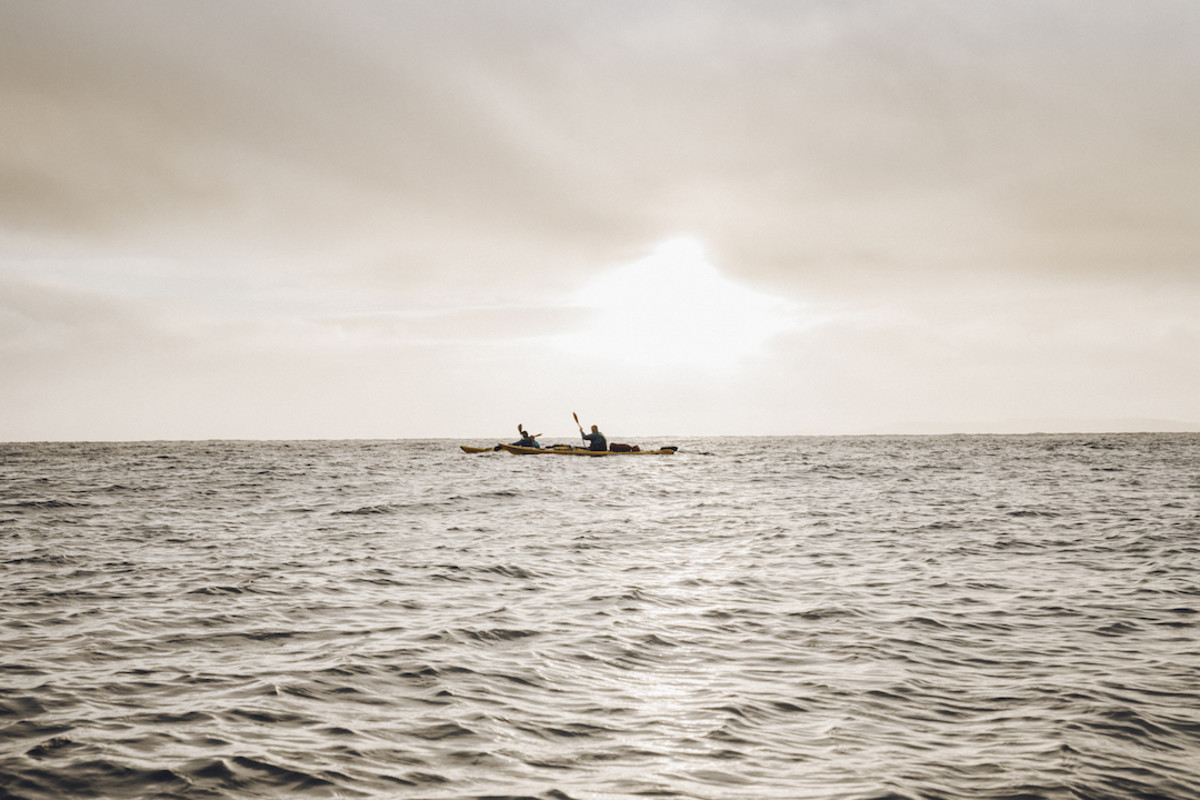
This was a must-make move of the expedition. The west coast is relentless. No one lives here, no one visits. And there’s a reason it’s so isolated. It’s an in inhospitable place, wild and rugged—a coastline constantly bashed by the roaring 40s combined with giant waves reaching their first landmass since being drummed up in Antarctica. Towering rocky bluffs mean there is no safe place to head back to shore. We were exposed—completely at the mercy of the oceans and our ability to battle them south.
Within moments of setting off, the swell was building, the wind building and getting big—really big. The wind beat us down, 40 knots of bitterly cold southerly right in the face. It’s tough to make progress and the team was exhausted. Conversation evolved to just critical shouts pointing out obstacles. The massive rollers moving in from the southwest were smashing our laden boats around, before crashing into the west-coast bluffs and refracting back, creating a turmoiled mess of water. My sea kayak was continuously threatening to flip, and with every big set, only got pushed closer to the unforgiving cliffs. The icy, inhospitable waters of the Southern Ocean were alive, and we were in our element, maybe, running the gauntlet, trying to pass 10 kilometers of exposed coastline, making a beeline for the South Cape and safe harbor, between two storm systems in our effort get south, and keep any chances of rounding the South Cape alive. There was no turning back, no fail safe, no option but to continue. We needed to get to shelter and fast. Eyeballing the coastline, we saw the channel into Kundy Island. We crept toward the shore, getting surfed down huge, breaking swells that were peaking with the opposing current and shallower waters. Two kilometers later, we pulled into the shelter behind the island. Instantly in calmer waters and could relax. The day was one for the books.
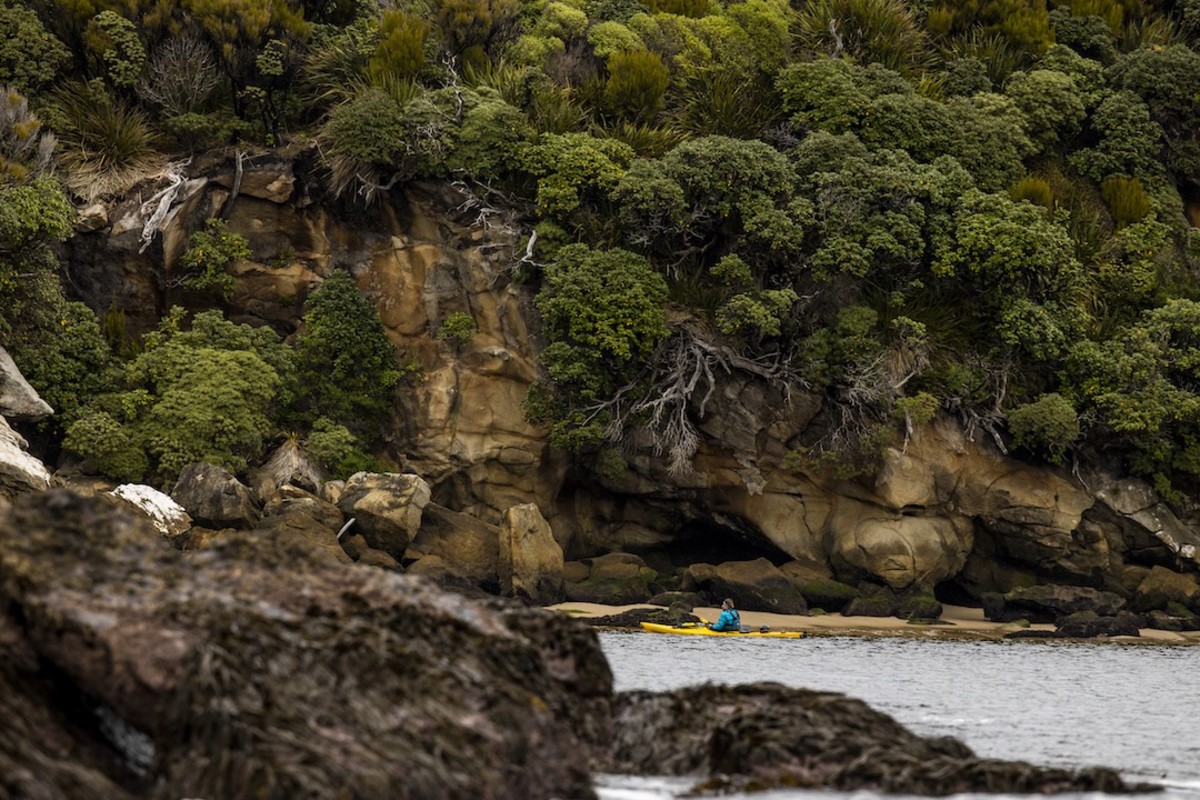
4. Embrace your surroundings
As we rounded the South Cape, the ocean had gone quiet, the wind dropped—from a raging beast to a caring friend. We were at the southern tip of New Zealand’s third largest Island. A long way from anywhere; it was time to just sit back and enjoy. Embrace the moment. Not a single sign of civilization. Just us, the ocean and its incredible creatures. We worked our way north, exploring bays, beaches and Islands.
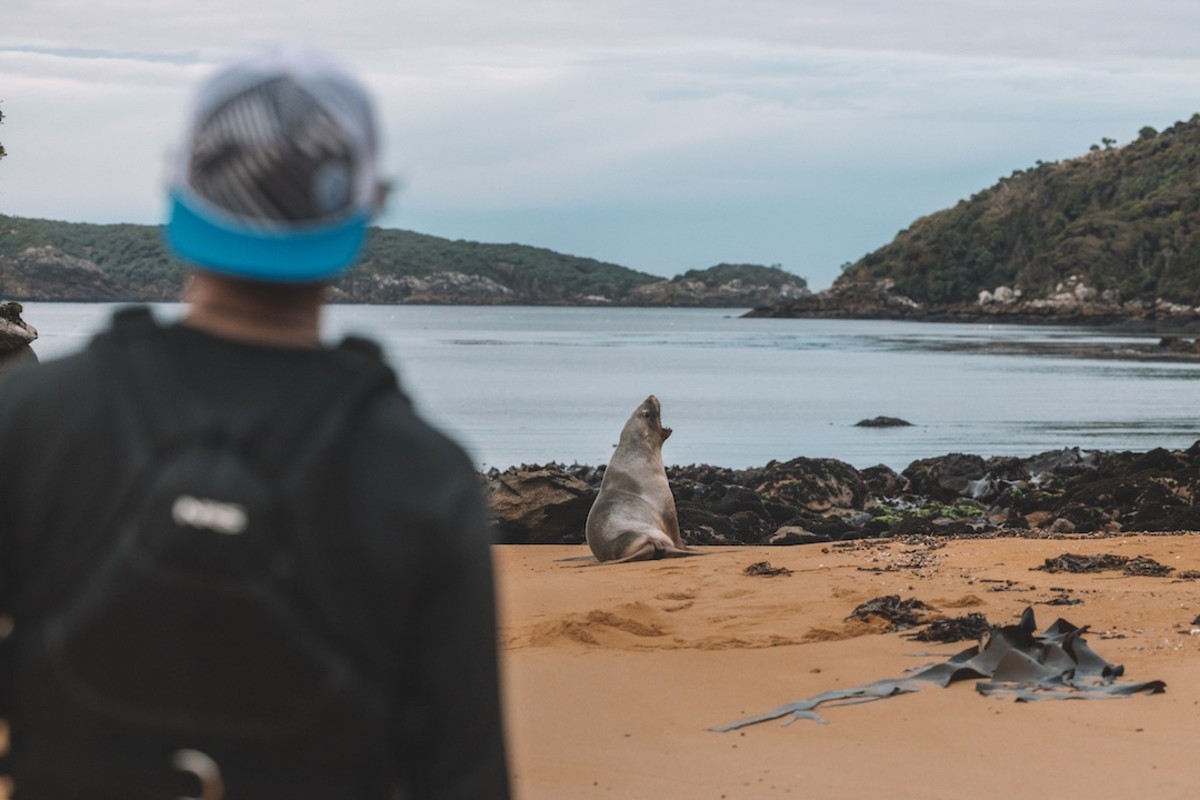
I stopped for a moment … let the team paddle ahead, just to take it all in. To enjoy where we were.
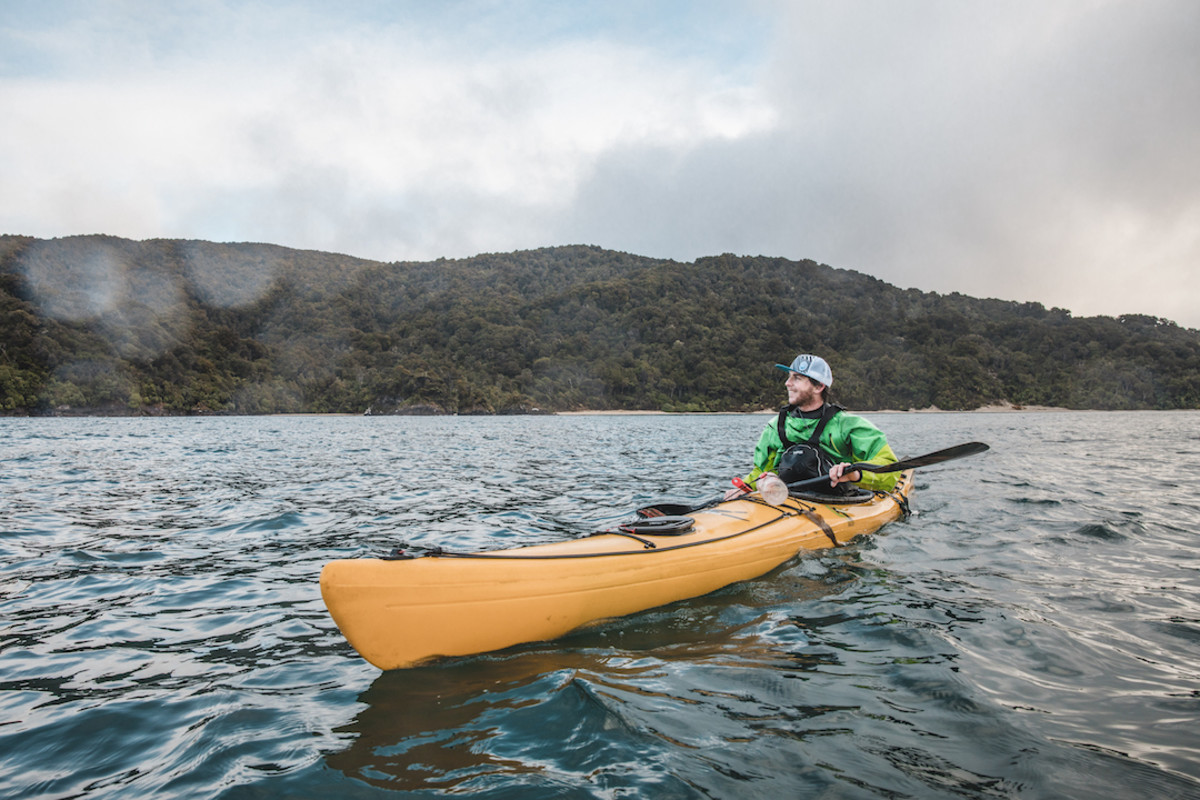
5. It’s always worth it
Once crossing the Southern Cape, we found ourselves in the relative safety of the Eastern Coast. More and more fishing boats began to appear, working the sheltered coastline to feed the global demand southern crayfish. It seemed as though we were at the finish line, that it was plain sailing to get back to Oban—Port Pegasus to Lords River, Lords River to Oban. But in reality, these were two huge, physically taxing days. Leaving Port Pegasus, a pod of dolphins surfaced and started swimming toward us, leading us out of the harbor and back into the ocean. They stayed with us, swimming alongside our boats, guiding us toward Lords River. Lords River is truly spectacular—one of the most beautiful places on the journey. The river snakes its way inland. Arriving on dusk, a cray boat pulled in and a bag of crayfish was tossed to the beach next to us. Dinner was served: six prime-sized NZ cray tails. This was to be our last night before another big but achievable day would see us in Oban. It wouldn’t be long before our journey would be over, before Oban would appear on the horizon, before we pull the boats up to their final resting spot—and head to the pub for a beer!
6. Capture the moment
For me capturing an expedition is as much of a challenge as getting it done. To tell the story of being out there without taking away from the authentic experience of just enjoying it. Stewart Island was a place where we were alone and isolated. Just us and nature, exploring somewhere new, untouched and beautiful.
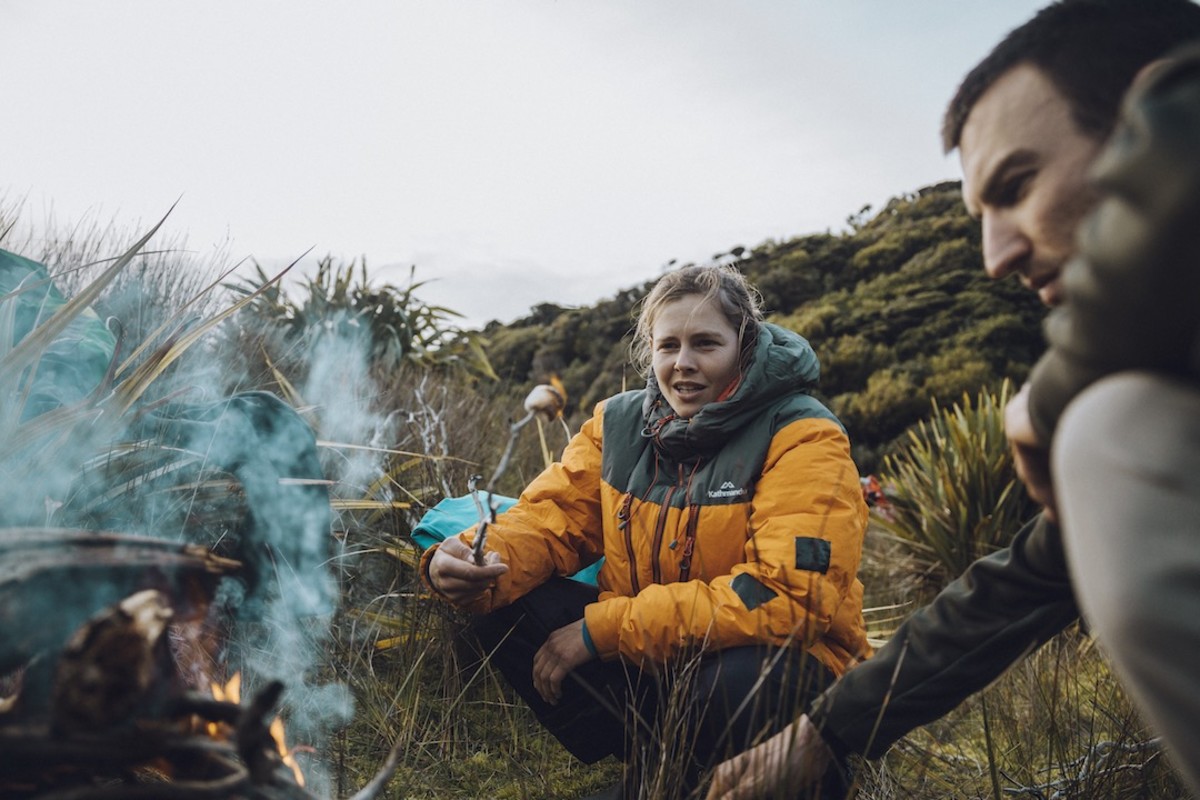
For me the question is always, ‘What camera setup to add to the monstrosity of equipment packed into the boats?’ Ultimately, in the wild world of adventure photography, less is usually more. The simpler, more diverse kit, the better. Stewart Island taught me the importance of the minimalistic approach to documentation: a setup that gets the shot but doesn’t slow the team down, that’s accessible to shoot and quick to get shooting ensures the ability to capture the moment.
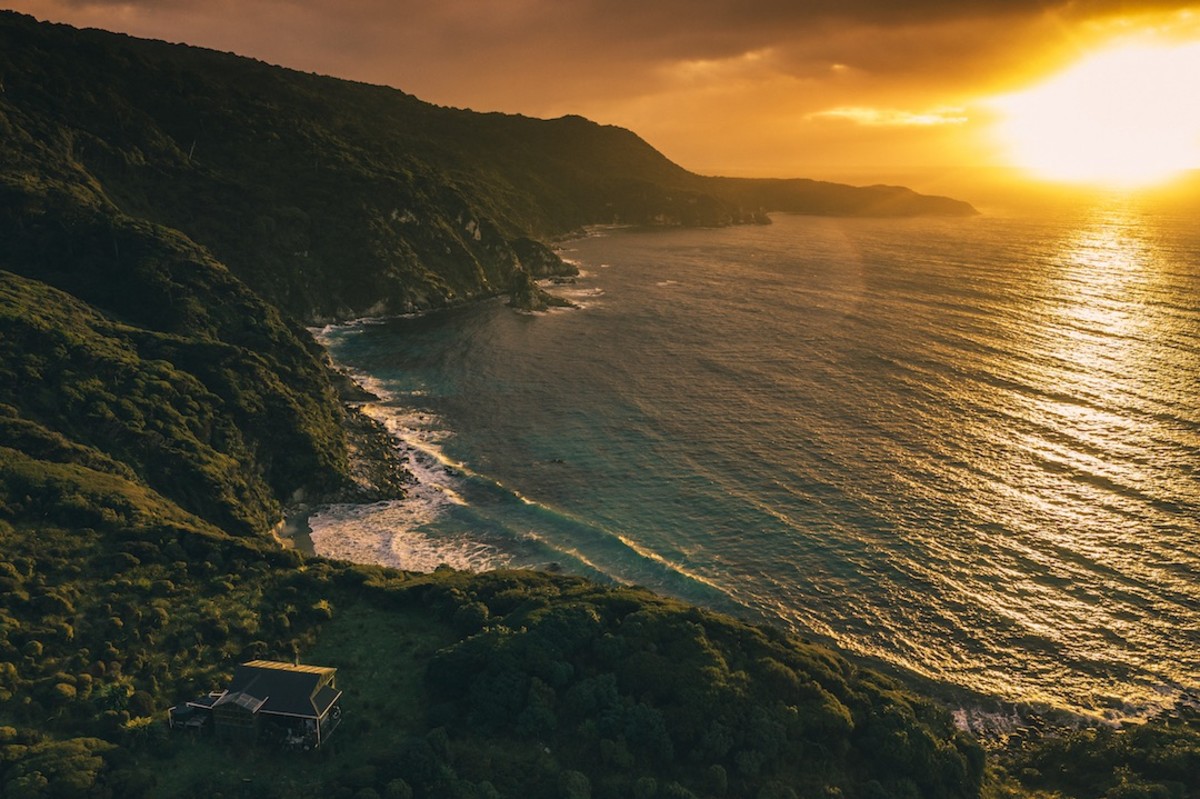
Shooting from a kayak is a dangerous game. There’s nothing quite as daunting as taking off the spray deck of your kayak far out in the Southern Ocean. Sacrificing the only thing stopping the icy cold sea water from rushing in, sinking my bright little kayaking just to get the shot—to access my camera, balanced precariously between my legs. And there were plenty of shots missed. Magical moments on the water where I couldn’t dare get my camera out, let alone take a hand off the paddle. Scary moments where the sole focus was survival.
But that’s all part of the game—of sharing the story.
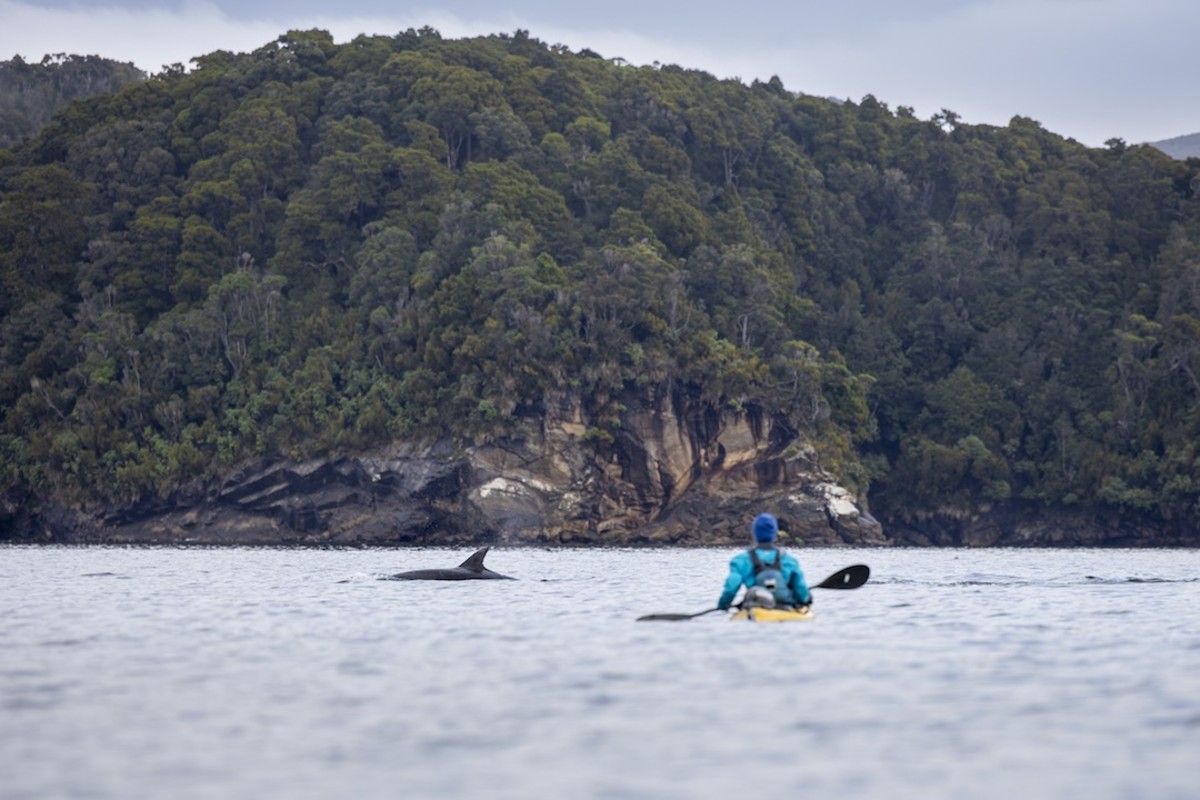
from Men's Journal https://ift.tt/3aMEjz3

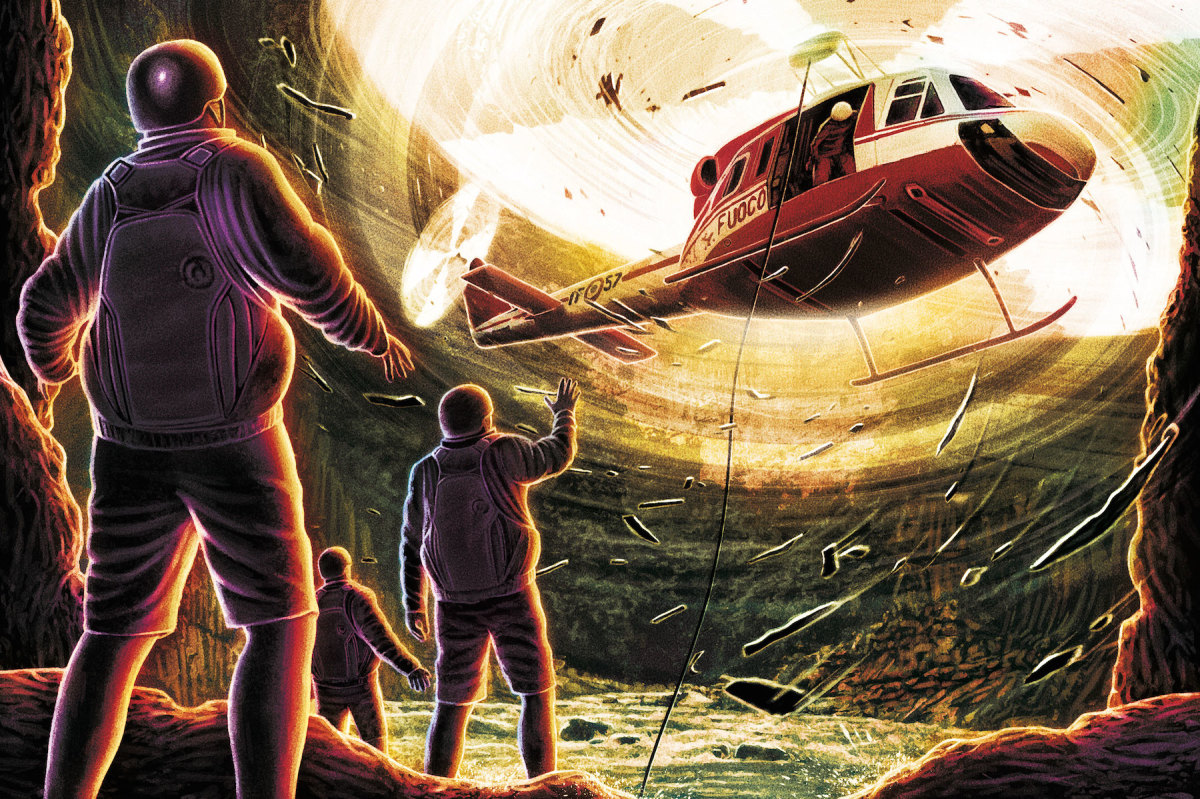

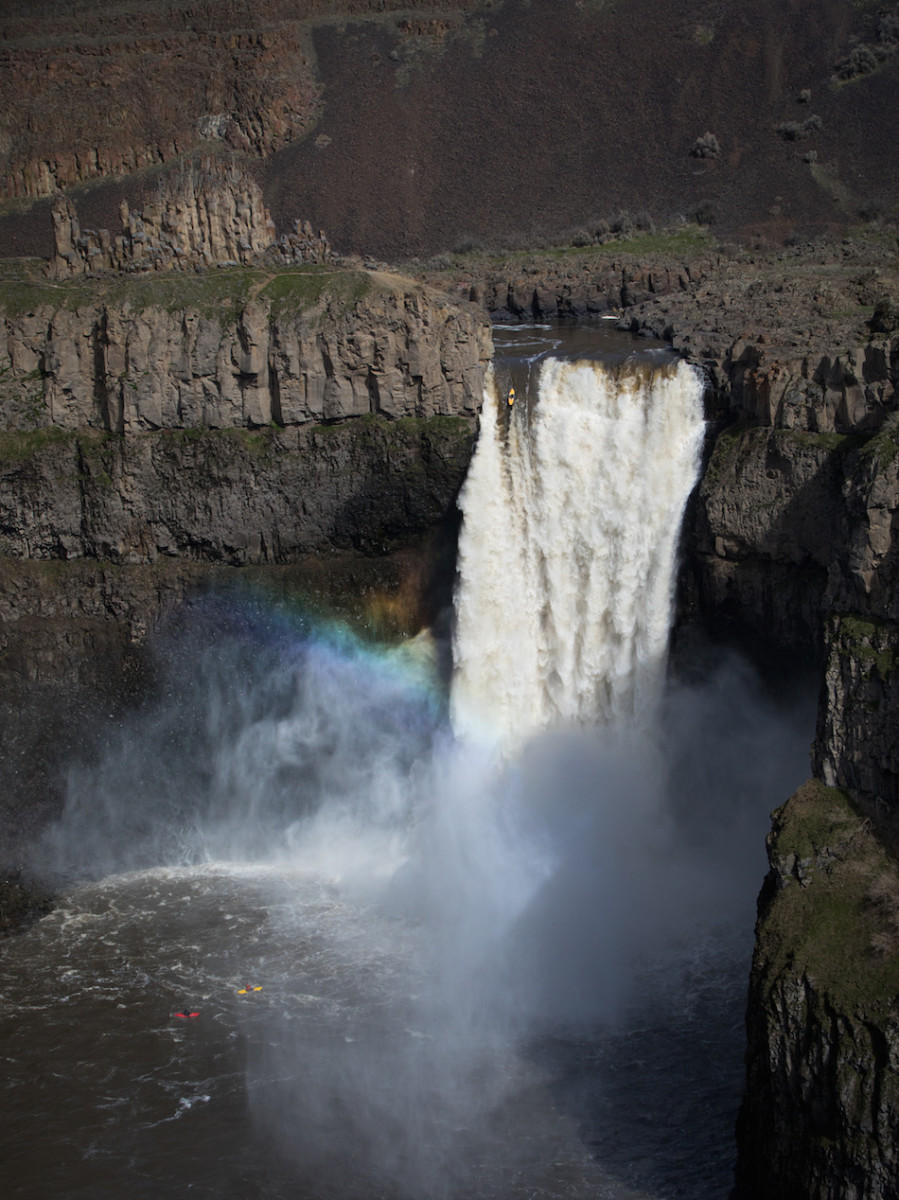
No comments:
Post a Comment